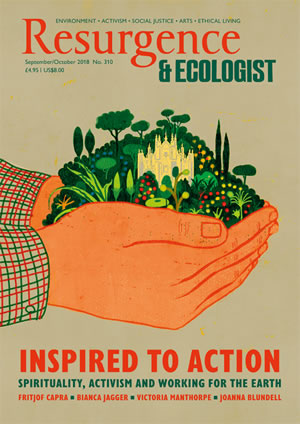I am, by inclination, a nocturnal naturalist. As the sun set, my day would begin: counting, tracking, studying hedgehogs. So I have an immediate kinship with Miriam Darlington’s quest in Owl Sense. As she heads out to meet and begin to understand these night-flyers, we are pulled into that, for me, familiar world where the clutter of light retreats and our senses become focused by restriction. Sound and scent spring to the fore of the sensual mix.
The owls – barn, tawny, little, long-eared, short-eared, eagle, pygmy and snowy – are all brought to life with the playful and lyrical prose one would expect from a poet. And this is first and foremost a wonderful insight into the nature of these myth-filled birds.
Yet Owl Sense is a many-layered thing. Darlington’s journeys to find the owls of Britain are an obvious narrative. Her family make appearances too, and despite the difficulty of working around her son’s illness, this does not intrude – it just lends humanity. But the story that is there as a constant in the background looks at the loss of abundance. This vitally serious but largely overlooked problem was first brought to public attention in Michael McCarthy’s magical Moth Snowstorm: Nature and Joy.
Darlington is subtle; this is not an in-your-face assault of misery. But it is there, the important message. The owls have not gone, but there are far fewer of them. Their diversity is just about intact, but their abundance is not.
Where Darlington does find abundance, it is so extraordinary as to now warrant flocks of tourists – just to see the long-eared owls in Serbia. The delight, and shock, in such accumulations of owls is the warning. What she meets in low-intensity agricultural landscapes is not ‘odd’. It is what we should have at home. And the threat is evident: ‘improvements’ are on the way that will lead to ecological degradation.
Over time the residents of the Serbian villages Darlington visited will come to imagine the owls they are left with as the owls they ‘deserve’. The insidious power of shifting baselines to undermine our ecological expectations has left us with what we have – something so diminished that abundance causes comment.
Of course this is an ecological worry. The reduction in predator numbers is a clear indication of the trouble elsewhere in the web of life. The state of the populations of easily missed mice, voles and even worms that form the staple of many owl meals is revealed in their decline. But there is another worry too about the loss. Darlington writes: “Watching birds is good for mental health … it reduces anxiety, stress and depression and builds a well-being connection that might remain for life.”
Owls are one of the staples of stories – they are one of the first birds any child learns to recognise by song alone (despite the traditional ‘twit-twoo’ of the tawny being not a single bird, but a male and a female communicating). Having them slip from our reality into our memory is as unthinkable as would be the loss of that other nocturnal icon, the hedgehog. Yet if we do not pay attention it could become a reality, one against which we must at all times fight.







